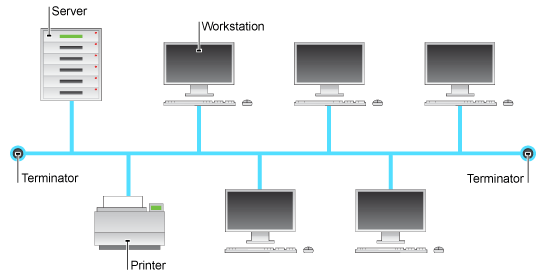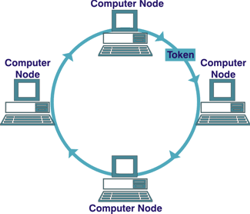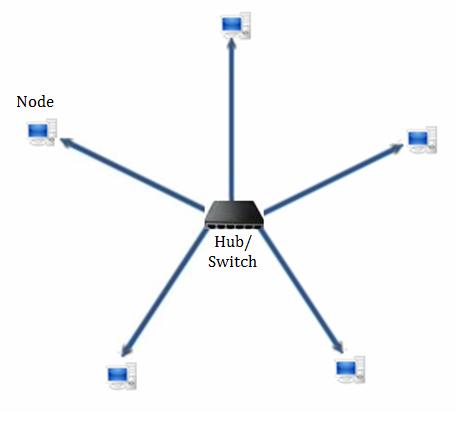
What is network topology?
What is physical topology?
Types of network topology...
1. Bus network

2. Ring network


- A network topology refers to the layout of the computers and devices in a communication network. It describes the physical and logical layout of the network.
What is physical topology?
- The physical topology of the network refers to the configuration of the cables, computers and other peripherals.
- The logical topology of a network refers how signal travels along the physical path.
Types of network topology...
1. Bus network

- Definition/physical topology - A bus network consists of a single central cable (backbone/trunk), to which all computers and other devices connect (node)
- Each devices connected to the single bus cable through T-connector
- A terminator is required at each end of the bus cable to prevent the signal from bouncing back and forth on the bus cable
- In a bus network, it transmit data, instructions and information as a series of signal in both directions where all nodes receive the signal but only the intended recipient will accept the signal and the rest will ignore.
- Failure of one device usually does not effect the rest of the bus network.
- Bus networks are inexpensive and easy to install.
- Computers and other devices can be attached and detached at any point on the bus without disturbing the rest of the network.
- The network will be malfunctioned if the single central cable break down.
- If more computers are connected, the performance of the network will become slower because of data collision.
- It is difficult to identifiy the problem if the entire network shut down.
2. Ring network

- Definition/physical topology - On a ring network, a cable forms a closed loop (ring) with all computers and devices arranged along the ring.
- Data transmitted on the ring network travels from device to device around the entire ring, in one direction (clockwise or counterclockwise) until it reach its destination by using token.
- Token passing is one method for sending data around a ring.
- Each device takes a turn sending and receiving information through the use of a token.
- All computers have equals access to the resources in the network.
- The uses of token passing enables all devices in a ring topology to share the network resources fairly.
- Data packet are flowing in one direction at high speed around the ring.
- The network will be malfunctioned if the device (pc/device) or cable break down.
- A ring network can span a larger distance than a bus network, but it is more difficult to install.
- Data packets must pass through every computer therefore, this makes it slower.

- Definition/physical topology - All the computers and other devices on the network connect to a central device (hub/switch), thus forming a star.
- Two types of devices that provide a common central connection point to all the other devices on the network are a hub and a switch.
- In a star network, data, instructions and informations transfer from one node to anoher node passes through hub/switch.
- If the network use hub, the signal will send to all nodes but only the intended recipient will accept the signal and the rest will ignore.
- If the network used switch, the signal will send directly to the intended recipient.
- If one device (pc/printer) fails, only that device is affected.
- Devices (pc/printer) can be added to or removed from network with little or no disruption.
- Easy to troubleshoot and isolate problem.
- The network will bw malfunctioned if the single hu/switch break down.
- Requires more cable than most of the other topologies.
